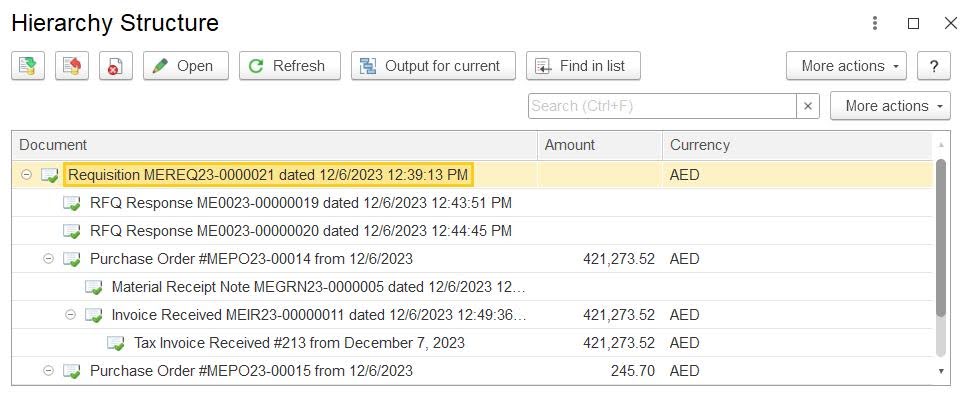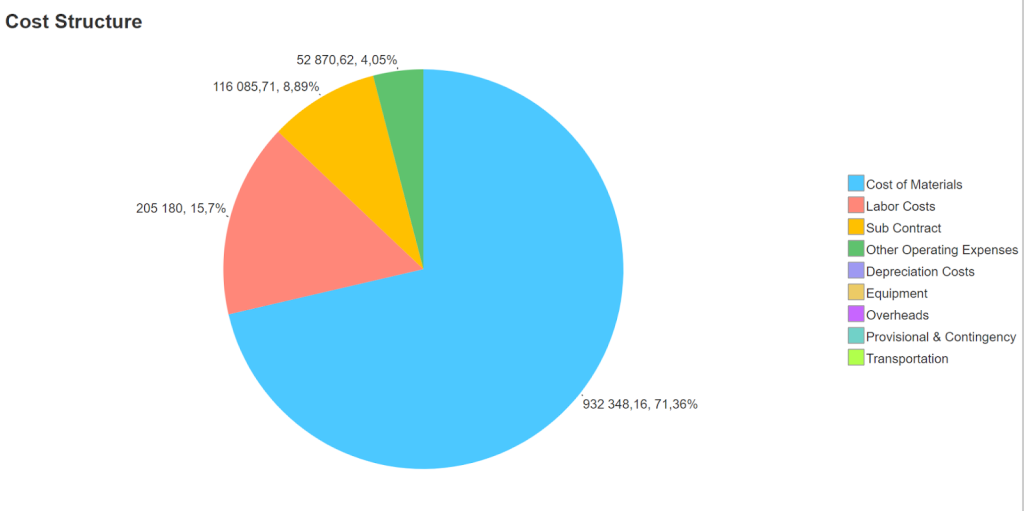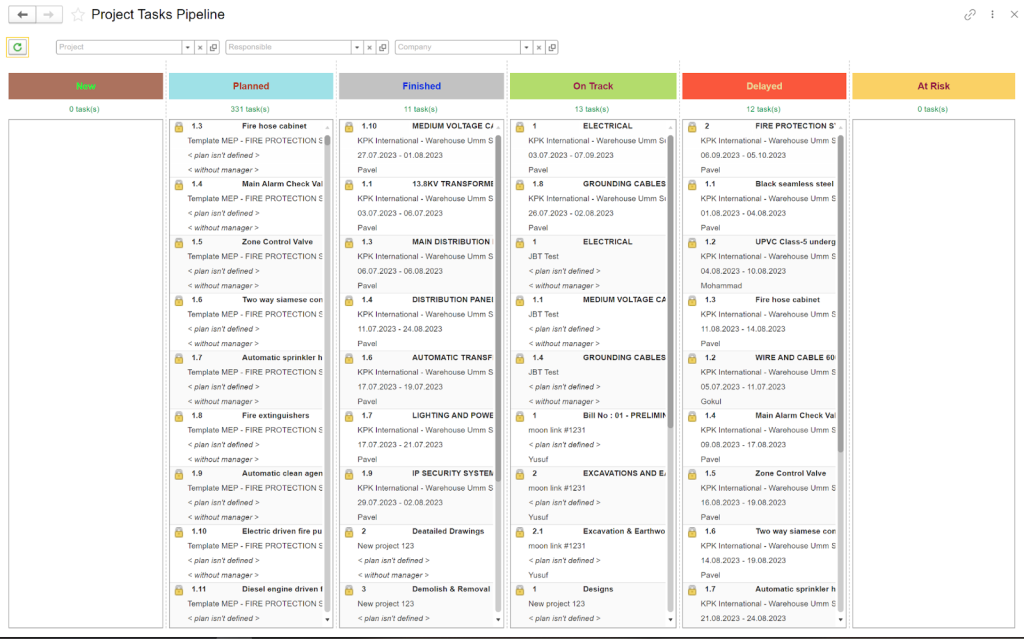Construction bidding is a rough competitive process. It is essential for obtaining the best price for goods or services, ensuring efficient and effective spending of public funds. Without a consistent plan, your construction business stands a good chance of not getting a bid to build the project.
In the UAE construction bidding process is a structured and regulated practice, particularly in the public sector. In this article, we will touch on the details of bidding in the UAE, as well as give a couple of recommendations on how you can improve your chances of getting a tender.
What Is Construction Bidding?
Construction bidding involves the submitting and approving bids between a contractor and its customer. It also includes how subcontractors secure work from the contractor after a job has been accepted.
A construction bid must be accurate. The bidder estimates a realistic cost by utilizing blueprints, construction plans, and material quantity takeoffs. The cost includes a profit margin and ensures the project’s feasibility. Contractors may also need to provide surety bonds to guarantee performance.
Types of Construction Bids
There are several types of construction bids.
Open Tendering
In open or competitive tendering, the project owner or general contractor asks all interested contractors to submit bids. They publicly share a bid package with project details and specifications, both in print and online, ensuring fairness and competition. Contractors propose their prices for the specified work.
This method is widely used in public construction but is rare in private projects. It boosts competition, leading to lower-priced bids. Yet, to ensure qualified contractors bid, project owners and general contractors (GC) often include a request for qualifications (RFQ).
Request for qualifications (RFQ) is a tool in the procurement process used to pre-qualify candidates based on specific criteria before moving on to the Request for Proposals (RFP) stage. The RFQ process involves defining clear objectives, drafting a detailed document with evaluation criteria, issuing the RFQ through appropriate channels, and rigorously evaluating responses to select qualified candidates.
In cases where a private developer needs more trusted contractor relationships or the project requires expertise, they may open the bid to all contractors to get competitive bids and build partnerships with local contractors.
Negotiated Tendering
Negotiated tendering is a procurement method used in the construction industry where the client approaches a single supplier based on their track record or a previous relationship with the supplier. The supplier is then asked to deliver the work, and the buyer and supplier negotiate the contract terms.
This method is usually appropriate for highly specialist contracts or for extending the scope of an existing contract. The advantages of negotiated tendering include reduced duration and costs of tendering, early supplier involvement, and the confidence of working with a supplier the client already knows. There is also potential for cozy relationships between the client and the supplier, which could be more desirable.
Selective Tendering
Selective tendering involves inviting a chosen group of bidders to submit proposals, commonly seen in private construction projects requiring specific expertise. Contractors are selected based on existing relationships, past performance, or expertise. Bid solicitation may be done through a bid management platform, and larger contractors use pre-qualification processes.
This method ensures quality control by choosing contractors with a proven track record, reducing project risks. However, it limits overall competition, potentially leading to higher prices. Despite this, project owners often prefer working with trusted partners who can undertake complex projects..
Selective tendering with known contractors can lead to quicker project starts and fewer delays, resulting in cost savings for the buyer.
Serial Tendering
Serial tendering in the construction industry involves submitting multiple bids for the same project, one after another, until the employer gets an acceptable bid. It generally consists of preparing tenders based on a typical or notional bill of quantities (BOQ) or schedule of works. This approach allows for a more flexible and iterative bidding process, enabling the employer to select the most suitable bid for the project.
A bill of quantities (BOQ) is a document that defines the quality and quantity of materials, labor, and equipment required for a construction project. It is prepared by a quantity surveyor or cost consultant to facilitate accurate pricing and control the bidding process for contractors. The BOQ essentially lists all the materials and labor needed for a specific build, aiding in cost estimation and project management.
Serial tendering is often used in civil infrastructure projects and is considered better than other types regarding cost reduction.
Win more profitable contracts
Plan tenders with FirstBit
Request a demo
UAE Bidding Practice
In the UAE, the tendering process is generally conducted in a fair and open manner, with all potential suppliers having equal access to the tender documents and information. The construction bidding process involves several stages, including pre-tender, tender advertisement, and selective tendering.
Some of the complications in the UAE construction industry's tendering process include contractual disputes related to variations and breach of contract, which are highly prevalent and often lead to delays and disruptions.
The standard tendering methods used in the UAE construction industry include:
-
Open public tenders. Governed by the Public Tenders Law, open public tenders are required for most tenders with a contract value over a certain threshold, typically AED 700,000. This method allows contractors to bid for tenders transparently and openly, promoting competition and fairness.
-
Selective tendering. It involves pre qualifying contractors and inviting a limited number of them to tender.
-
E-Tendering. Electronic tendering processes are becoming increasingly common in the UAE. The method can streamline the tendering process, improve efficiency, and enhance collaboration.
Steps in Construction Bidding
Here is how the construction industry’s bidding process flows.
1. Request for General Contractors to Bid on the Project
The bidding process begins with the project owner or architect advertising that the project is open for bid, making bid documents accessible to potential bidders. This process can be facilitated by the owner, an owner's representative, the construction manager, or the project architect, depending on the chosen project delivery method.
Types of bidding requests:
Request for Proposal (RFP)
Purpose: RFP is a process-sourcing method that focuses on more complex and demanding projects.
Characteristics: It allows contractors to propose solutions beyond just pricing, emphasizing quality, innovation, and expertise.
Request for Quote or Qualifications
Purpose: This process is typically more price-focused and streamlined compared to an RFP.
Characteristics: It involves soliciting quotes or qualifications from potential vendors, often with a simpler bidding process.
Purpose: ITB is price-sourcing oriented, emphasizing competitive pricing among vendors.
Characteristics: Involves a sealed bid process to ensure fairness and transparency in vendor selection.
The owner sends a package containing an RFP, RFQ, or ITB. This may be selectively sent to specific general contractors or openly advertised for you to bid. The package comprises project drawings, specifications, reports, and a draft contract. Such information as bid date and time, whether the bid opening will be public or private, and how bids will be scored is also included.
2. Sending the Project to Subcontractors for Tender
Once a general contractor is about to bid on a construction project, he thoroughly reviews the project documents to identify the types of work required for successful completion. The following actions are:
-
Invitation to bid. Following the project assessment, the GC creates a comprehensive invitation to bid, providing detailed information on the project's scope of work. This invitation is then sent out to potential subcontractors.
-
Distribution of bid package. The GC employs various channels to distribute the invitation and project documents, collectively called the bid package. This distribution process includes sending directly to subcontractors with prior experience and advertising through bid exchanges, contractor’s associations, and bid sites.
Near the bid date, subcontractors send their bids to you bidding on the project. You need to:
The goal is to compare subcontractors in the same trade. Though, be prepared. This is not easy because everyone bids on projects differently. Ask subcontractors to revise their pricing, provide more details. Also you can submit revised proposals based on your requests.
You select the winning subcontractors for each trade based on the criteria given for the project. This may include having a particular skill set, experience with similar projects, a working relationship with you, or a low price. While it's true that the lowest bid usually gets chosen, it isn't always the case. Having experience with similar projects and establishing a working relationship with GC are good ways to win bids.
Next, you compile the final bid price for the project:
Bids are then opened either publicly or privately.
3. Bid Submission
In the bid submission phase, interested contractors provide project documentation including their business information, timeline, financial details, and costs. General contractors request bids from subcontractors for specialized aspects of the job and combine them to prepare the bid submitted to the property owner.
In order to create an accurate bid, contractors must develop a precise estimate for all project costs, which includes:
-
Labor
-
Materials
-
Equipment
-
Overhead
-
Profit margin
Contractors can nail down a competitive bid by reviewing project specifications, calculating overhead and profit margin, and performing material takeoffs. A good bid reflects high quality at a reasonable price.
Contractors may need to submit a bid bond with their bid to be considered for a project. The bond guarantees that the contractor will complete the project as per their bid.
4. Selecting a Contractor
Once all the general contractors submit their bids, the owner or architect reviews the packages and compares them based on the criteria in the request for proposal. Various factors may influence the selection of the general contractor.
Usually, the primary consideration is the lowest bid, especially for public projects where there may be legal requirements to choose the lowest-priced contractor.
Owners also value contractor’s experience in similar projects. If a request for a proposal asks about past projects, then experience will likely be a factor in the selection process. Once a contractor is awarded the project, the next stage begins.
5. Contract Negotiations
Once the project owner picks the general contractor, they discuss the contract. The process the following:
-
The owner informs the GC about the final approved price, including any optional elements from the bid.
-
Both parties negotiate the contract terms and project schedule before finalizing the contract.
-
In some cases, public owners have fixed terms, and the GC must agree to them to proceed with the project.
Typically, a contract is created by either the owner or the contractor, and both parties review it. They might negotiate further on aspects like payments, damages, or insurance. If they can't agree on terms and prices, the owner can choose another contractor for the project, and the negotiation process begins anew.
6. Signing the Contract
After all negotiations, the parties sign the contract.
Contractors can still negotiate specific provisions even if the owner uses a standard contract form like AIA or ConsensusDocs. Once both parties agree, they sign the contract, and executed copies are distributed to relevant project team members. The GC also provides requested documentation, such as insurance certificates and bonds.
Keep every project profitable
Request a demo
Tip for Increasing Your Chances
To succeed in bidding, it's important to understand the process and its complexities. As a contractor, you need to adopt the right strategy to increase your chances of winning the bid. This means having a comprehensive understanding of the details involved and being well-prepared.
You should also consider the project delivery method, as well as the types of construction that fit your expertise. Choosing the right project delivery method early can also influence the outcome of the construction bidding process.
Construction project owners consider several factors beyond the lowest bid while selecting a contractor. Along with the price, try to organize project experience, safety record, and scheduling approach to ensure a successful outcome.
Construction Bids and First Bit
ERP software can greatly assist with construction bidding by streamlining tender and bid management processes, optimizing efficiency in construction projects, integrating and automating business processes, and providing real-time monitoring of data and information.
First Bit provides software for better management of construction projects, minimizing time you spend on manual tasks and increasing transparency of the project. It contains:
-
Documents hierarchy tab. The feature will increase the project organization and allows you to keep on hand requisitions, invoice sheets, cost estimates, etc.
Hierarchy Structure in FirstBit ERP
Cost Structure in FirstBit ERP
Project Tasks Pipeline in FirstBit ERP
Build stronger client relationships
Organize contacts through FirstBit ERP
Request a demo
FAQ
1. What is a bid bond in construction?
A bid bond in construction is a type of surety bond that guarantees a contractor will honor their bid, enter into the contract if awarded, and provide the required performance bonds—protecting the project owner financially if the bidder fails to follow through.
2. What are the benefits of a bid bond?
A bid bond in construction provides the project owner with crucial assurance in two key ways. First, it confirms that the bidding contractor is financially capable and committed to honoring their bid and proceeding with the contract. That's why it helps prequalify credible bidders. Second, it protects the owner financially by enabling them to recover the difference between the winning bid and the next lowest one if the successful bidder withdraws.
3. What does bidding mean in construction?
In construction, bidding refers to the formal process where contractors submit competitive proposals—detailing costs, methods, and qualifications—to the project owner or general contractor in hopes of winning the contract to complete the project.
4. What are the key factors for successful bidding?
A successful construction bid hinges on conducting a thorough bid/no‑bid analysis, ensuring accurate takeoffs and cost estimates, clarifying ambiguities early, assessing risks and competitiveness, and tailoring your proposal to align with your firm's strengths and the project's requirements.
Anna Fischer
Construction Content Writer
Anna has background in IT companies and has written numerous articles on technology topics.










